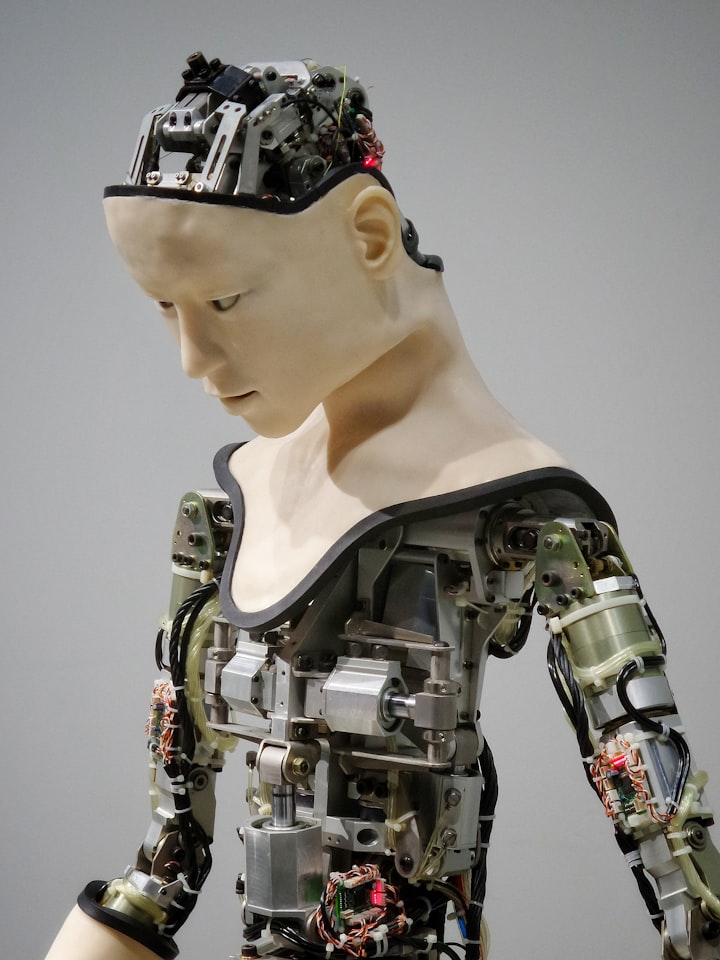The Future of Humans in a World with Robots
"Exploring the Impact of Robots and AI on Industries, Jobs, Society, and Ethics in the Next Century

The creation of robots and the integration of artificial intelligence (AI) in our daily lives is no longer just science fiction. With the exponential growth of technology, it's likely that we will see significant advancements in the field of robotics in the next century. But what will the future of humans look like in a world where robots are increasingly prevalent? Here are some potential scenarios:
Increased Efficiency and Productivity: The use of robots in industries such as manufacturing, logistics, and agriculture can lead to significant increases in efficiency and productivity. Robots can work 24/7 without fatigue or breaks, leading to faster production cycles and increased output. This can ultimately result in lower costs and increased profits for businesses, which could translate to more job opportunities and economic growth.
New Job Opportunities: While there is no doubt that some jobs will be automated, there is also potential for new jobs to emerge. For example, there may be a need for robot designers, programmers, and maintenance workers. Additionally, the use of robots could lead to the development of new industries and services, creating new job opportunities.
Enhanced Safety: Robots can be used in situations where it may be dangerous for humans to work. For example, robots can be used in mining, where there is a risk of cave-ins or toxic gas exposure. In disaster situations, such as earthquakes or floods, robots can be used to search for survivors, reducing the risk of injury or death to human rescue workers. Additionally, self-driving cars could reduce the number of traffic accidents caused by human error.
Socio-Economic Impacts: The increasing use of robots could lead to significant socio-economic impacts. For example, there may be job losses in industries that are heavily automated, such as manufacturing. This could exacerbate economic inequality if the displaced workers are unable to find new jobs. Additionally, there may be ethical concerns around the use of robots in fields such as healthcare and law enforcement. For example, should robots be used to make life and death decisions in healthcare, or to enforce the law?
Changes to Social Dynamics: As robots become more prevalent in society, there may be changes to social dynamics. For example, people may form relationships with robots, as we already see with virtual assistants such as Siri and Alexa. This could lead to changes in the way we interact with each other and with machines. Additionally, the use of robots in caregiving could lead to changes in family dynamics, as robots may be able to provide care for the elderly or disabled.
The Emergence of Superintelligence: While the development of superintelligence is still theoretical, there is a potential for robots to surpass human intelligence. This could lead to significant changes in society, as robots would be able to solve problems that humans cannot. However, there is also a risk that robots could become unaligned with human values or objectives, leading to potential risks. It's important that we develop safe and ethical AI to ensure that robots are aligned with human values and objectives.
Increased Efficiency and Productivity: The use of robots can not only increase efficiency and productivity but also improve quality control. Robots can perform tasks with a high degree of accuracy and consistency, reducing errors and waste. This can lead to higher-quality products and services, which can improve customer satisfaction and loyalty. Additionally, robots can work in environments that are hazardous or difficult for humans, such as deep-sea exploration or space exploration, which can lead to new discoveries and scientific advancements.
New Job Opportunities: While some jobs will be automated, there is potential for new job opportunities to emerge. For example, there may be a need for data scientists, cybersecurity experts, or AI ethicists to address the challenges of a world with increasingly intelligent machines. Additionally, the use of robots could lead to the development of new industries and services, such as personal robotics or healthcare robotics, creating new job opportunities.
Enhanced Safety: Robots can not only be used to perform dangerous tasks but also to monitor and analyze safety data. For example, robots can be used to detect gas leaks or monitor air quality in hazardous environments. This can lead to early detection and prevention of safety hazards, improving overall safety for workers and the public. Additionally, robots can be used in disaster response and recovery efforts, such as search and rescue missions, where they can navigate hazardous environments more effectively than humans.
Socio-Economic Impacts: While the increasing use of robots could lead to job losses in some industries, it could also lead to job creation in others. For example, the development of robots and AI could lead to the creation of new industries and services, such as personalized medicine or autonomous transportation. Additionally, the use of robots could lead to increased efficiency and productivity, which could result in higher wages and more job opportunities overall. To minimize the negative impacts of automation, it's important to invest in education and training programs to ensure that workers have the skills they need to adapt to changing job markets.
Changes to Social Dynamics: The use of robots could lead to changes in the way we interact with each other and with machines. For example, as robots become more intelligent and human-like, we may develop emotional connections with them, leading to new ethical and social challenges. Additionally, the use of robots in caregiving could change the way we provide and receive care, leading to changes in family dynamics and social norms. To address these changes, it's important to engage in ethical and social discussions about the role of robots in society.
The Emergence of Superintelligence: The emergence of superintelligence is a theoretical but possible outcome of AI development. If robots become more intelligent than humans, they could potentially solve complex problems and make decisions beyond our current abilities. However, there is also a risk that superintelligent machines could become uncontrollable or pursue objectives that are not aligned with human values. To ensure that robots are developed and used safely, it's important to engage in research and development that prioritizes safety and ethical considerations.
In conclusion, the integration of robots and AI in our daily lives is inevitable. While there are significant benefits to the use of robots, there are also potential risks and ethical considerations that must be addressed. As such, it's important that we approach the development and use of robots with caution and foresight, ensuring that we can leverage the potential of robots while minimizing their negative impacts.
About the Creator
Malik Idrees
My work has been featured in a variety of publications, including online blogs and print magazines. My writing has been praised for its depth, clarity, and ability to engage and inform readers.






Comments
There are no comments for this story
Be the first to respond and start the conversation.